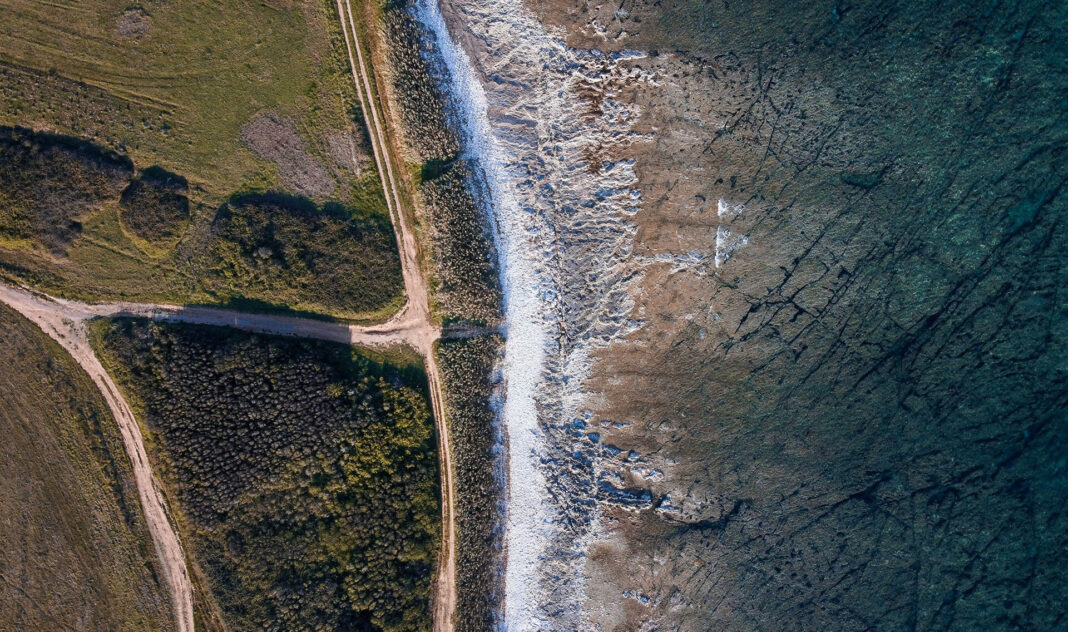Jacob Brostrup 的画作如同一场关于空间与记忆的梦境探索,特别是在他描绘的梦幻外景中,自然与建筑、现实与幻想交织成一种超现实的视觉体验。他的作品常呈现出绚烂的色彩、层层叠加的画面结构,以及如幻灯片般的透明叠影,使观者仿佛穿越多个时空维度。外墙、窗户、树影与天空在他的笔下相互渗透,营造出一种迷离而宁静的氛围。Brostrup 善于捕捉建筑与环境之间微妙的张力,让原本静止的景象显现出生命的流动感。他的灵感往往来源于旅行、老照片或城市日常,却被赋予了情感上的浓度与象征意义。这些梦幻外景画作不仅展现了空间的美学重构,也引导观者进入一种沉思的状态,在熟悉与陌生之间,寻找属于自己的视觉记忆与情感回声。
Usually when a museum is flooded with water, something has gone seriously wrong. But at the Fondation Beyeler just outside the Swiss city of Basel, the flooding of the museum is all part of the show: a new site-specific installation called Life by the Danish-Icelandic artist Olafur Eliasson.
The artist has removed one side of the Renzo Piano-designed building (with the architect’s blessing) and let the feature pond—usually separated from the climate-controlled interior by a large glass wall—into the museum. Visitors can navigate the waters, which are up to 80cm deep, using a series of walkways that run in and out of the building. At night, the interior is lit up with blue light.

Eliasson has also dyed the water a fluorescent green and filled it with pond plants, including water lilies and shellflowers selected by the landscape architect Günther Vogt. The water has been coloured using uranine, an organic dye that is commonly used to observe water currents, and which Eliasson has used previously for his Green River (1998) work where he dyed rivers in cities such as Stockholm, Tokyo and Los Angeles.

In an accompanying artist statement, Eliasson writes: “Together with the museum, I am giving up control over the artwork, so to speak, handing it over to human and non-human visitors, to plants, microorganisms, the weather, the climate—many of these elements that museums usually work very hard to keep out.”
The southern side of the building will be open to the elements for the duration of the show, which ends in July. Eliasson writes that “even if no human visitors are in the space, other beings—insects, bats, or birds, for instance—can fly through or take up temporary abode within it.” This possibility is very much part of the work, with the artist adding that when he first spoke to the museum’s director Sam Keller about ideas for the show, he thought to himself: “Why don’t we invite everyone to the show? Let’s invite the planet—plants and various species”.
The show is open 24 hours a day. “Visitors can access the installation at any time. After 9.30pm they do not need a ticket,” says a spokeswoman. She adds that, in terms of non-human visitors, so far there have been “insects, spiders, ducks, a goose and cats.”


